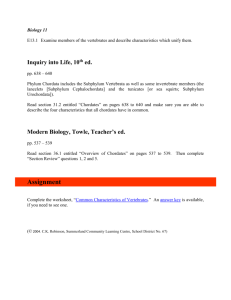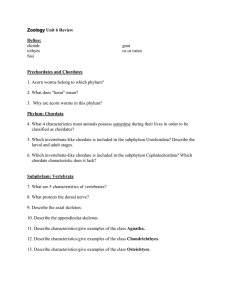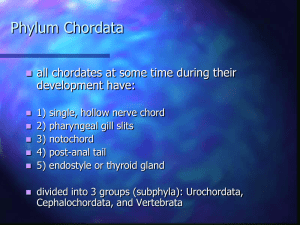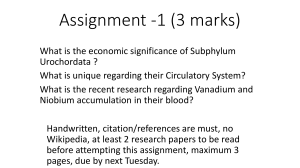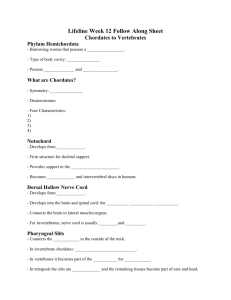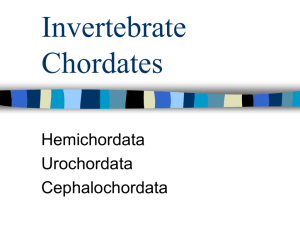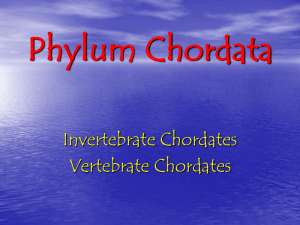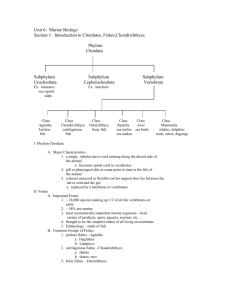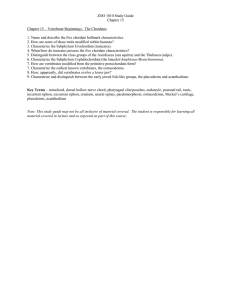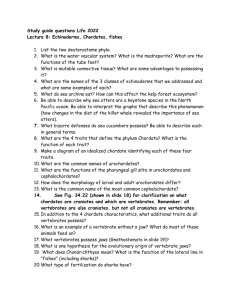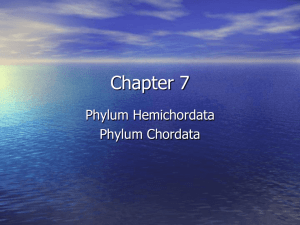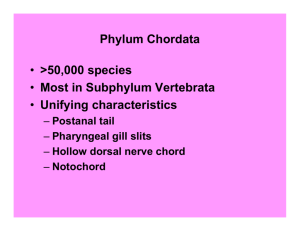Subphylum Cephalochordata
advertisement
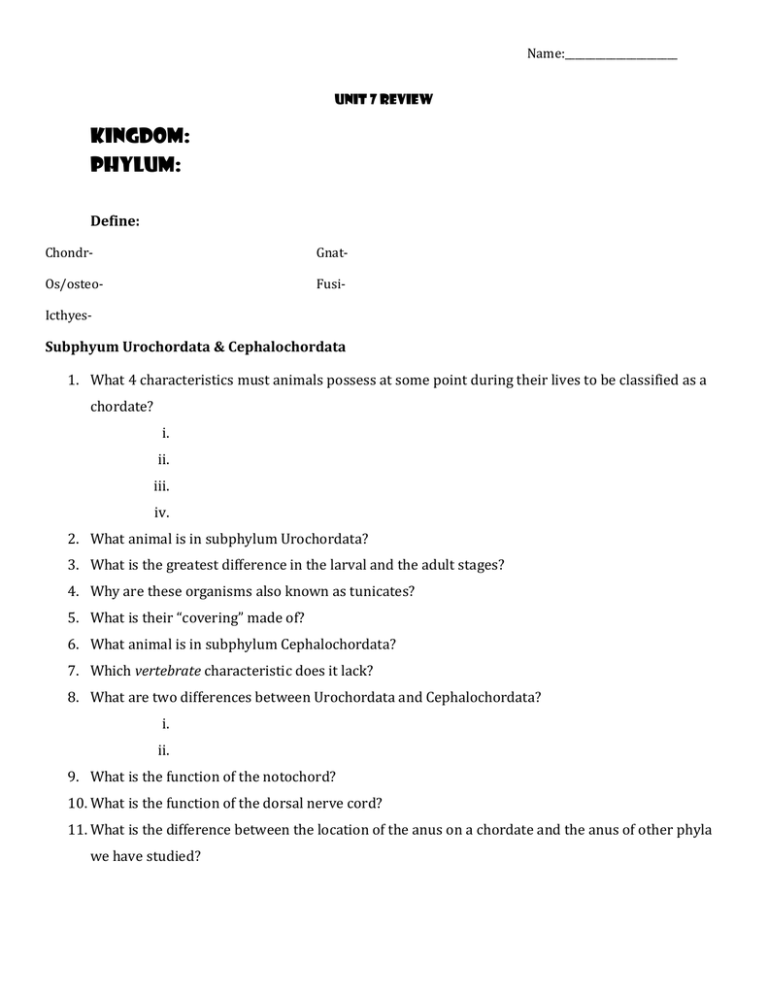
Name:______________________ Unit 7 Review Kingdom: Phylum: Define: Chondr- Gnat- Os/osteo- Fusi- Icthyes- Subphyum Urochordata & Cephalochordata 1. What 4 characteristics must animals possess at some point during their lives to be classified as a chordate? i. ii. iii. iv. 2. What animal is in subphylum Urochordata? 3. What is the greatest difference in the larval and the adult stages? 4. Why are these organisms also known as tunicates? 5. What is their “covering” made of? 6. What animal is in subphylum Cephalochordata? 7. Which vertebrate characteristic does it lack? 8. What are two differences between Urochordata and Cephalochordata? i. ii. 9. What is the function of the notochord? 10. What is the function of the dorsal nerve cord? 11. What is the difference between the location of the anus on a chordate and the anus of other phyla we have studied? Subphylum Vertebrata 12. What are the 5 characteristics of vertebrates? i. ii. iii. iv. v. 13. What protects the dorsal nerve cord? 14. Describe the axial skeleton: 15. Describe the appendicular skeleton: 16. What are the characteristics of class Agnatha? 17. What are examples of class Agnatha? 18. What does the name “Agnatha” translate to? 19. What are the characteristics of class Chondricthyes? 20. What are examples of class Chondrichthyes 21. What does the name “Chondrichthyes” translate to? 22. What are the characteristics of class Osteichtyes? 23. What are examples of class Osteichtyes? 24. What does the name “Osteichthyes” translate to? Name:______________________ 25. List the four characteristics of chordates: 1. 2. 3. 4. 26. Do chordates necessarily keep all of these characteristics as adults? Subphylum Urochordata 27. What is the common name of this organism? 28. Which figure is the adult ________ and which is the larva ________? 29. Which characteristic of chordates is Figure B missing? (30-33) Label the notochord, gill slits, nerve cord, and postanal tail. Subphylum Cephalochordata 34. Do cephalochordates maintain all chordate characteristics as adults? (35-38) Label the four characteristics in the diagram below: 39. Where do cephalochordates live? 40. Why do they need muscular tissue? Subphylum Vertebrata 41. Do any vertebrates maintain these chordate characteristics as adults? If so, which ones? 42. What characteristics make vertebrates different from other chordates? (3) 1. 2. 3. 43. List 5 examples of vertebrates. Name:______________________ Name:______________________ Class Chondricthyes 44. What body type do sharks have? 45. What is the function of olfactory sacs? 46. Draw a placoid scale that covers the body of Chondrichthyes. 47. What types of skeleton do sharks have and what is it made of’? 48. What type of heart do sharks/rays have? 49. What type of tail do members of this class have? 50. Do sharks/rays have a swim bladder? 51. How do sharks stay afloat? 52. What system do fish have that other vertebrates lack? 53. What does this system detect? Class Osteichthyes 54. Describe the skeleton. 55. How is the tail shaped? 56. What type of scales do bony fish have? 57. What is the function of the operculum? 58. Describe how a fish’s bladder works. 59. How many chambers does a fish’s heart have? 60. What is the cloaca? 61. Define: OviparousOvoviviparousViviparousLabel the fish diagrams—
